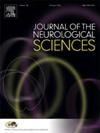Improving prognostic models of six-month clinical outcomes after severe traumatic brain injury with daily inpatient biomarkers: A Bayesian modelling approach
IF 3.2
3区 医学
Q1 CLINICAL NEUROLOGY
引用次数: 0
Abstract
Background
A key limitation of the IMPACT model for prognostication after severe traumatic brain injury (TBI) is the use of predictors from hospital admission only. We sought to identify if including daily blood labs (e.g., glucose, sodium, platelets, hemoglobin) and other vitals (e.g., heart rate, mean arterial pressure [MAP], partial pressure of carbon dioxide [PaCO2]) for the first 2 weeks post-severe TBI improves prognostication compared to the IMPACT model alone.
Methods
This is a secondary analysis of a prospectively collected database of patients from a single level 1 trauma center between November 2002 and December 2018 (n = 315). All patients had severe TBI at presentation, defined as Glasgow Coma Scale (GCS) ≤8. Researchers extracted daily blood labs and vitals for the first 14 days post-injury. We used Naïve Bayes to estimate class-conditional probabilities for an “IMPACT-only” model and a “full” model with the IMPACT score plus the biomarkers measured on post-injury days 1–13. The top ten predictors were included in the full model. DeLong's test assessed whether the difference in area under the curve (AUC) were significant (p < 0.05).
Results
The full model to predict unfavorable outcomes at six-months had significantly better discrimination (AUC = 0.83) compared to the IMPACT model (AUC = 0.74; p < 0.01). The full model to predict death by six-months had significantly better discrimination (AUC = 0.83) compared to the IMPACT model (AUC = 0.75; p = 0.02).
Conclusions
Biomarkers typically collected as part of inpatient clinical workups over the first two weeks post-injury improved discrimination of unfavorable outcomes and mortality by six-months compared to IMPACT.
使用每日住院生物标志物改善严重创伤性脑损伤后6个月临床结果的预后模型:贝叶斯建模方法
IMPACT模型用于严重创伤性脑损伤(TBI)后预后的一个关键限制是仅使用住院时的预测因子。我们试图确定,与单独使用IMPACT模型相比,在严重TBI后的前2周,包括每日血液实验室(如葡萄糖、钠、血小板、血红蛋白)和其他生命体征(如心率、平均动脉压[MAP]、二氧化碳分压[PaCO2])是否能改善预后。方法:对2002年11月至2018年12月间从一家一级创伤中心前瞻性收集的患者数据库(n = 315)进行二次分析。所有患者在就诊时都有严重的TBI,定义为格拉斯哥昏迷评分(GCS)≤8。研究人员提取了受伤后最初14天的每日血液化验和生命体征。我们使用Naïve贝叶斯来估计“仅影响”模型和“完整”模型的类别条件概率,该模型具有影响评分加上损伤后1-13天测量的生物标志物。前十个预测因子被包含在整个模型中。DeLong’s检验评估曲线下面积(AUC)差异是否显著(p < 0.05)。结果与IMPACT模型(AUC = 0.74; p < 0.01)相比,full模型在预测6个月不良结局方面具有明显更好的辨别能力(AUC = 0.83)。与IMPACT模型(AUC = 0.75; p = 0.02)相比,预测6个月死亡的完整模型具有更好的辨别能力(AUC = 0.83)。结论:与IMPACT相比,在损伤后的前两周内,作为住院临床检查的一部分收集的生物标志物可在6个月内改善对不良结果和死亡率的区分。
本文章由计算机程序翻译,如有差异,请以英文原文为准。
求助全文
约1分钟内获得全文
求助全文
来源期刊

Journal of the Neurological Sciences
医学-临床神经学
CiteScore
7.60
自引率
2.30%
发文量
313
审稿时长
22 days
期刊介绍:
The Journal of the Neurological Sciences provides a medium for the prompt publication of original articles in neurology and neuroscience from around the world. JNS places special emphasis on articles that: 1) provide guidance to clinicians around the world (Best Practices, Global Neurology); 2) report cutting-edge science related to neurology (Basic and Translational Sciences); 3) educate readers about relevant and practical clinical outcomes in neurology (Outcomes Research); and 4) summarize or editorialize the current state of the literature (Reviews, Commentaries, and Editorials).
JNS accepts most types of manuscripts for consideration including original research papers, short communications, reviews, book reviews, letters to the Editor, opinions and editorials. Topics considered will be from neurology-related fields that are of interest to practicing physicians around the world. Examples include neuromuscular diseases, demyelination, atrophies, dementia, neoplasms, infections, epilepsies, disturbances of consciousness, stroke and cerebral circulation, growth and development, plasticity and intermediary metabolism.
 求助内容:
求助内容: 应助结果提醒方式:
应助结果提醒方式:


